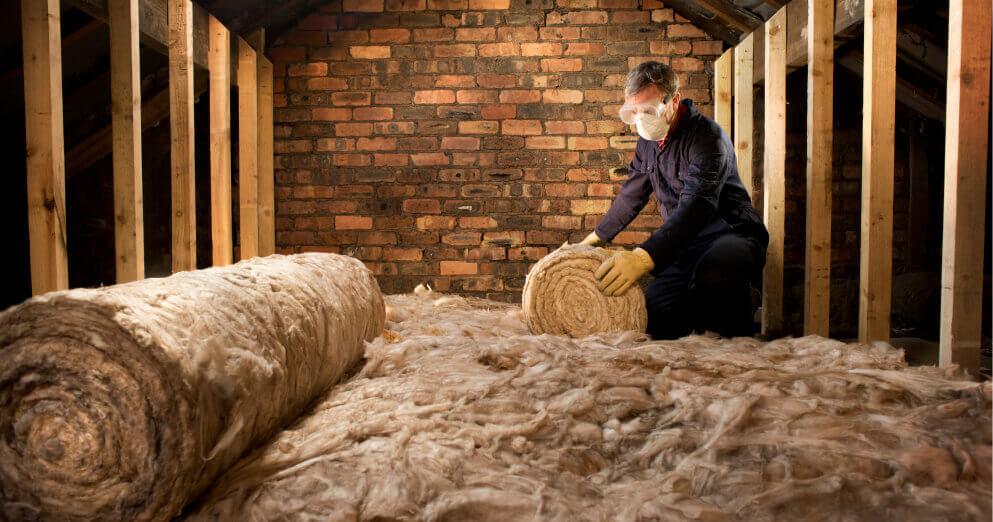
Property Insulation Tips: How to Achieve Maximum Energy Savings
When it comes to insulation, property A is never exactly like property B. Your house is different to everyone else’s. Your boiler or heat pump is different. The insulation you’ve got is different. So when we talk about energy savings from insulation we’re forced to work in averages. For every person who saves above the average amount, someone else will save below it.
So how do you maximise energy savings from insulation? The trick is to make sure your home gets the biggest bang for its energy saving buck, and in this post, we’re going to explain how to do that.
Loft insulation
According to the Energy Saving Trust , installing loft insulation could help cut your energy bills by between £240 and £445 every year. So how do you lock in those energy savings?
- Installation: Insulation needs to be installed correctly. It needs to cover (almost) the whole loft (so there’s no point leaving a tricky patch uncovered because heat will use it as an escape hatch). Equally, you’ll want to leave an air gap in the eaves to prevent condensation.
- Quantity: It’s important to use the correct quantity of insulation (two layers – one between the joists and then another across the joists) because too little won’t offer the level of insulation you need and too much will risk condensation as the warm air will have nowhere to go.
- Moisture: It’s important that the insulation stays dry, so you’ll want to replace any damaged or missing tiles/slates before you install loft insulation in your property.
- Air: The final tip for achieving the biggest savings is to avoid placing items stored in your attic on the loft insulation. It’s at its most effective when all the air trapped between its fibres is able to do its job. When you plonk a heavy Christmas tree on it, you squeeze out that insulating layer of air.
Room in roof insulation
The only problem with loft insulation is that if you’ve converted your attic into a room, you’ll need another method of property insulation. Room in roof insulation (RIRI) is the answer. Here, instead of insulating the attic floor, you insulate the area between rafters and plasterboard.
According to the Installation Assurance Authority, room in roof installation can cut an average of £395 from home energy bills each year.
The key to getting maximum energy savings from insulation in the roof is to choose the right material. Wool insulation isn’t the right choice for a sloping roof as it’s likely to slip and clump near the eaves (particularly if it gets damp), reducing insulation at the ridge and creating damp further down.
A hard insulating board is key to maximising success here.
Internal wall insulation
You know how effective multiple layers of clothing can be in keeping you warm in winter. Internal wall insulation (IWI) has the same effect on your home.
Effectively, there are two types of IWI. If you’re installing a drywall partition, you can fill the cavity of the drywall with insulation. If we’re dealing with a solid wall, IWI involves fixing a layer of insulating board directly to the wall.
Energy savings from insulation of this type can be up to 35% of your annual bill.
To maximise energy savings, insulation needs to cover the whole wall, including awkward areas like ceiling or floor voids. Unless you can successfully address these voids, gaps and cracks, effectiveness can significantly reduce.
That’s why it’s important to choose professional installation, working with people who know how to ensure your property insulation is able to do its job.
Cavity wall insulation
Getting the biggest bang for your buck from cavity wall insulation is really about the quality of the material you install. As we explore in this post specifically about cavity wall insulation, better quality material means more energy efficiency and no ‘slump’ (so your insulation stays effective across the whole wall rather than sinking to the bottom).
Another important cavity wall insulation property is moisture resistance. Without this, the material soaks up water, which prevents it working effectively and loses all the energy savings from insulation.
With the right quality material installed correctly, however, the Energy Saving Trust estimates cavity wall insulation will pay for itself within five years, and you’ll save about £280 a year.
Do it all
A home loses heat wherever insulation isn’t. Insulating your loft is a great first step, but you’ll lose less energy (and less money) when you insulate your walls too. That’s not a sales tactic. It’s just common sense.
Think of it in terms of your own body. You’ll reduce the heat that escapes from your head when you wear a hat, but if the rest of you is naked you’ll still feel a bit chilly.
So to enjoy the biggest savings from all of your insulation measures, it’s important to insulate wherever you can. In combination (and providing you do the other things in this post) you’ll find your savings are at the higher rather than lower end of estimates.
Why Green Improve?
Because we match real expertise with the very best products. So if you want to get the biggest savings from property insulation, talk to us.
There might even be a grant to help you. Apply for a grant now

